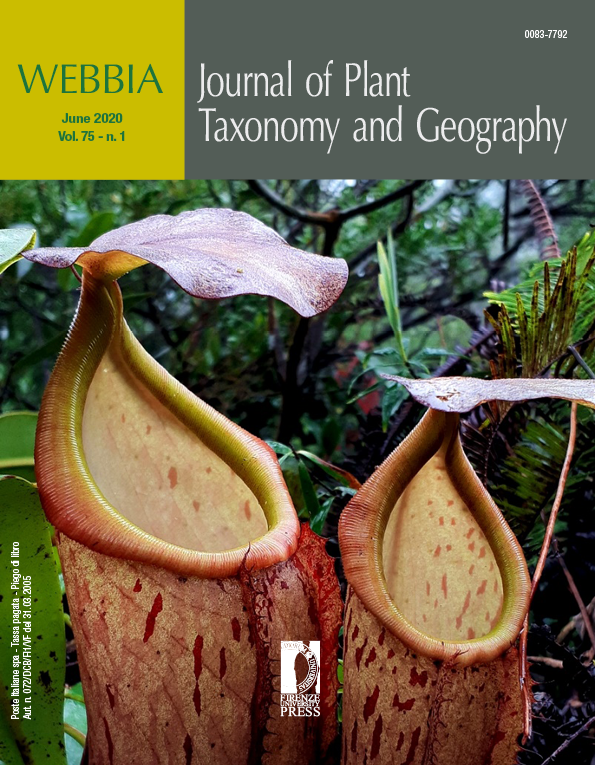Taxonomic significance of vegetative and reproductive morphology in southern Africa Rhynchosia sect. Rhynchosia (Fabaceae: Papilionoideae, Phaseoleae)
Published 2020-07-01
Keywords
- subtribe Cajaninae,
- tribe Phaseoleae,
- Leguminosae,
- Taxonomy
How to Cite
Abstract
Rhynchosia is the largest genus in the subtribe Cajaninae, tribe Phaseoleae. Due to the lack of a recent taxonomic revision in the genus, the species are poorly known and as a result, are difficult to identify. As part of our ongoing taxonomic studies on the genus in southern Africa, this paper presents a comparative study of vegetative and floral morphological variation in the 47 species currently recognised in the type section Rhynchosia in the region. This is with a view to provide useful diagnostic morphological characters that can be used to correctly identify species in the type section and in other sections. The study used morphological data from field observation, herbarium specimens, and literature. Stems, leaves, and floral structures were examined with a dissecting microscope. A stereoscope with a camera lucida attachment was used to draw the reproductive morphology. Although morphological characters seem to overlap between the sections, characters such as leaflets size, type of indumentum on leaflet surfaces, stipules shape, type and length of inflorescences, presence or absence of indumentum on standard petals, presence and absence of sculpturing on wing petals, as well as length of upper lobes of the calyx are useful in identifying species.

